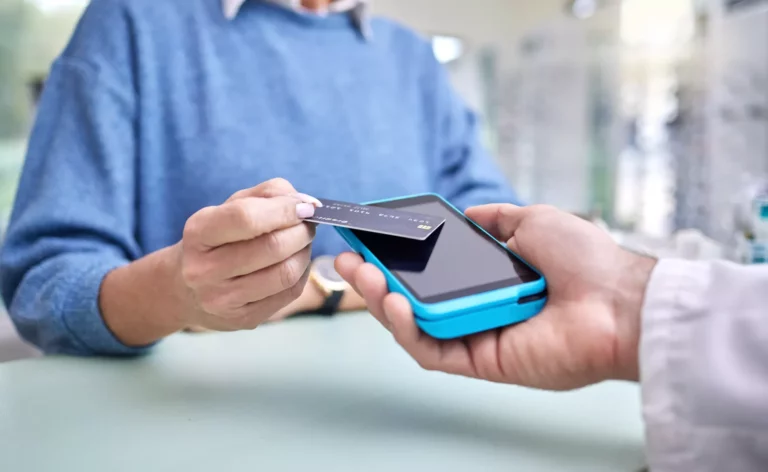In the world of healthcare financing, the patient should always come first.
At AccessOne, this belief is not just a mantra: it’s a guiding principle. We are committed to making healthcare affordable and accessible for everyone while ensuring patients have the best possible experience.
And, with the rising complexities and challenges in healthcare affordability, it’s become increasingly crucial to understand the pivotal role of patient advocacy.
As such, for the first installment of our executive interview series, we spoke with Lisa Smith, AccessOne’s Senior Vice President of Patient Experience, who manages the Patient Advocate Centers (or PACs).
Among other things, she also manages consumer communications, with the aim to make all touchpoints clear and easy to understand for all patients.
In this enlightening Q&A, Lisa offers a comprehensive overview of how AccessOne delivers exceptional patient experiences and explains the vital role played by the Patient Advocate Centers in manifesting our “do no harm” framework.
Join us as we explore how AccessOne’s unwavering commitment to patient-centric financing is reshaping the healthcare landscape. Let’s dive in.
Background and Professional Experience
Q: The idea of putting patients first seems to align with your previous work experiences in juvenile justice. How did you go from working in justice and government services to leading the patient experience in AccessOne?
It happened because I had a medical event. It was serious and I needed to step back and take a pause in my life.
I wanted to see what else was out there, so I looked at a few things and then ultimately got into healthcare financing. And it really has been an amazing career change for me.
As a juvenile justice advocate, I worked with children and families that were either abused or neglected or were involved in crimes.
I worked to create opportunities for them to be successful, especially when they had not experienced success in a lot of other areas of their life. Many parents often want the best experience for their children, but don’t know how to get there. I worked with these families so that they could make long lasting changes.
Everybody starts out with the best of intentions, but life happens.
With medical bills, it’s the same thing: life happens. Nobody plans at the beginning of the year to spend time in the hospital, but it happens. Sometimes this happens because of chronic illnesses, sometimes acute, but everybody has that experience of going to the doctor and getting a bill they can’t afford.
Often, these individuals have to make decisions between getting healthcare or paying their bills. And in situations where they absolutely have to get healthcare, they then make life determining decisions based on medical bills.
That’s where AccessOne can come in and provide them with an affordable solution.
That’s really important to me. When I listen to phone calls from the PACs, at the end of the call patients often start crying, because they’re relieved. They say that they haven’t slept for who knows how long because of the stress of their situation.
People start dodging calls because they’ve never been in a position where they couldn’t pay their bills, and they feel embarrassed. And then they call us, and to their relief, they can actually afford to make payments with AccessOne. If they had known about our solutions, it would have saved them a lot of angst and a lot of sleepless nights.
The Importance of Patient Experience
Q: What does “do no harm” mean for the patient experience for you?
For me, “do no harm” is first of all, looking at where these patients have been, what they’ve already experienced—they’ve had to go to the doctor, to the hospital, and they’ve incurred an expense. Looking at the patient experience, or customer service for that matter, is not an individual event, but a continuum.
What I want to do from a patient experience standpoint is, from the time a patient looks at a brochure in the waiting room and they see AccessOne, to the end of their account where they have made payment, I want that patient to have an exemplary experience where the entire focus has been on ease, understandability, and affordability.
When they get to that end of the line, I want them to say “I’m glad I’ve got that paid. But if I ever need another payment plan or I ever need to do it again, I’m going to AccessOne. Because there’s nothing about that experience that I would have changed.”
Q: What are the primary challenges that patients face in the healthcare system, especially with respect to financial barriers?
Many people don’t qualify for financial assistance.
And there’s the uncertainty as well. When they go into the hospital, they don’t know what the bill will be—all they know is they’re going to get a bill and they’re expected to pay it. Nowhere else in our lives does that happen. I would not go to a car lot and ask the dealer to pick what he thinks is the best for me and I’ll agree to pay whatever that is.
But we do that with healthcare, and it’s one of the largest expenses we get over the course of our lives. So that uncertainty is difficult for a patient.
Add to that another uncertainty: of their own medical condition or the condition of their family member. It creates a lot of stress, and a lot of things that are just not pleasant.
So wherever we can, we bring certainty and affordability to the patient financial experience, by providing options that meet their needs. Also, knowing that they won’t be credit reported and that we won’t run their credit, this provides an additional level of certainty for the patient.
Q: What does empathy mean to you within the patient experience?
Empathy is not sympathy. I don’t feel sorry for the individual, but instead I put myself in their situation. If I were in this person’s situation, how would I want to be treated? What would I want to understand?
Through AccessOne, I might not be able to provide them exactly what they want, but I can present them with what we have to offer, to the best of our ability. And I can talk with them to understand what their needs are.
Again, a lot of the people who call have never been in a situation where they couldn’t pay their bills. And we have a number of different solutions for different situations. For instance, we have a number of payment options. We have 0% options which are great, but we also have other flexible repayment options that allow patients to pay in way that works best for their families and financial situations.
However, at the end of the day we’ll give the patient what they want, because it’s their bill and we’re going to honor their wishes.
The Role of the Patient Advocate Center (PAC)
Q: You already shared a bit about the Patient Advocate Center—can you tell us what function it plays in the patient experience in AccessOne?
The West Coast PAC is open from 5 am to 5 pm, the East Coast PAC is open from 8 am to 6 pm. We have clients all over the U.S, including Hawaii and Alaska.
The patient advocates themselves, they come from a variety of backgrounds.
I oversee their training, to improve their understanding of the patient experience, active listening, the psychology of customer service. We also focus on looking at some of the cognitive biases, how to work with them instead of against them.
We spend actually more time training our PAC members in those softer skills then we do the harder skills, because the harder skills aren’t hard.
And then also understanding what happens on the hospital side.
But overall, we teach them to sit in the chair of the patient and create an experience that provides them with value all along the way.
Q: What do you look for when hiring for the PACs?
When I’m hiring, I look for empathy, but also critical thinking skills.
I can teach you how to use a headset and a phone. But, for example, if we get a phone call from a patient who just finished kidney dialysis and wants the 0% program, it’s important that we’re listening. Because we know our product, and we know that kidney dialysis is not a one and done situation.
So we know that the patient will have more bills in the future, and we know that our 0% program has a shorter term. As bills add on, they could get quite a large payment. We want to keep it affordable, so we make them aware of other options available to them.
Of course, we’ll give the patient what they want, because at the end of the day, it’s their bill and we’re going to honor their wishes. Whether it’s the 0% program or any other program, the patient will get exactly the payment plan that they want.
Looking Ahead
Q: For providers, there’s also a financial incentive to improve the patient experience because it helps manage the revenue cycle more efficiently. Looking at the future of the industry, what are the provider incentives going to look like to continue to focus on the patient experience?
When I was growing up, you went to your community hospital and the family doctor for your entire life, unless you needed a specialist. But for the most part we were very loyal to our doctor and hospital.
Now there are so many different options, and patients can go where they will be treated well.
The same with healthcare financing: patients will go where they feel valued, where they get what they need as far as affordability, but also where they feel respected and understood.
Certainly, the “future” means patients will have more and more options to access what they need, in the way they want to, when they want to. And they should be able to do anything they need to do in the way that they want to.
The only way healthcare stakeholders can create the ideal experience for patients is by keeping our finger on the pulse of what’s out there, what would make their life easier. And above all, always making sure that they all have the options they need.
If providers take this approach, they will develop long lasting and loyal relationships with patients.
Q: As a leader in this industry, what advice would you give to other companies in healthcare financing?
Whenever I get a question from the PACs, whatever the request is, my response to the patient advocate is: is it the right thing for the patient?
Because if it’s the right thing for the patient, it’ll be the right thing for the client, for the hospital, and for AccessOne—if you keep patients first, everybody wins.
It’s when we forget about that patient that we get sidetracked. Patients are number one, always—if it’s right for the patient, you’ll do right for the business.
To learn more about AccessOne, reach out for a demo today.


